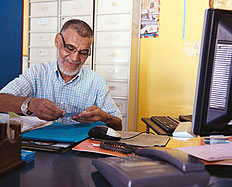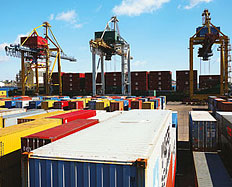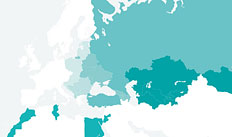Chapter 1
Progress in Structural Reforms
The year to end-September 2012 has been another difficult one for reform in the transition region as growth prospects have again weakened and the economic outlook has worsened. Some countries have not yet fully recovered from the impact of the 2008-09 crisis, and a few have slipped into recession again. There have also been isolated signs of populist dissatisfaction with painful economic adjustments. At the same time, and as a consequence of the deterioration in growth performance, governments have faced difficult fiscal challenges and rising levels of public debt. Inflation has not been a primary policy concern in most transition countries, but there are renewed pressures from increases in agricultural and other commodity prices. In much of the region, levels of unemployment and poverty are rising and adding to social stresses. It is no surprise, therefore, that the overall pace of reform has stalled.
Despite an exceptionally difficult few years, most of the reforms introduced in the previous two decades are still intact. There has not been a wholesale reversal of transition in any country in response to the crisis. Policy-makers are still broadly committed to the principles of markets, competition and open trade; Montenegro and Russia have joined the World Trade Organization (WTO) in the past year, and Croatia is on the verge of accession to the European Union (EU). However, there has been more regression in certain respects than in previous years, especially in the energy and financial sectors where state involvement has extended beyond what can be justified in the context of crisis response. Most importantly, there is no sign of the major reform drive that is still needed in most countries to boost growth rates towards their long-term potential.
This chapter provides an overview of some of the main reform themes since mid-2011 at the sectoral and country levels. As in previous years, the summary is based on an analysis of recent transition achievements and reversals along the path towards a well-functioning market economy and of the remaining "gaps", or challenges. Updated numerical scores provide a snapshot of where each country stands in the transition process.
This Transition Report includes, for the first time, a detailed assessment of transition progress and challenges in the four countries of the southern and eastern Mediterranean (SEMED) region: Egypt, Jordan, Morocco and Tunisia. In the wake of the events of the Arab uprising in the first half of 2011, Jordan and Tunisia have recently become shareholder countries of the EBRD (Egypt and Morocco have been members since 1991). The following review aims to assess the economies of the four member countries of the SEMED using the same sector- and country-level methodology that the EBRD uses in its countriesof operations.







